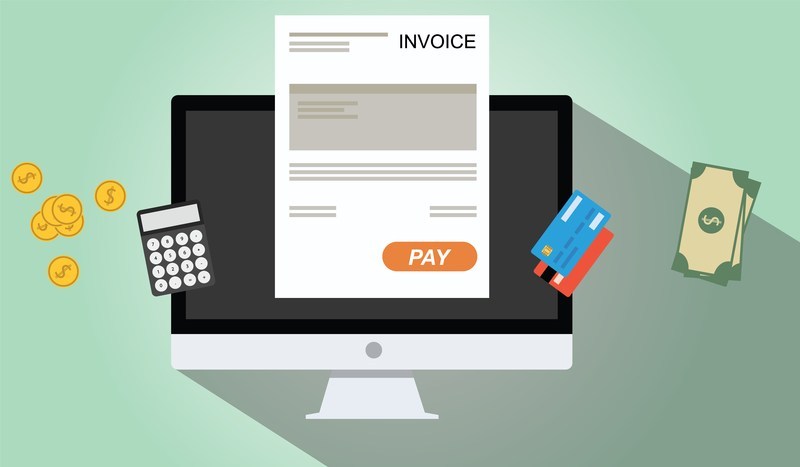
Are invoices a headache for you too?
Do you also dread every process of it?
I mean, you have worked on the project, followed the client’s brief to the dot, submitted it, made changes, submitted it again. Now, it’s your time to get paid.
But, not so quick!
First draft an invoice. Add all the charges in it. Send it to the client. If the client is good, you’ll be paid on time. If not, send constant reminders to them. Now they have agreed to pay, but another dispute has risen. What currency do you prefer?
This is the process that goes on every week or every month. Why is invoicing so difficult? Do any solutions exist to simplify it?
Well, good news! There are some solutions. This article will talk about them and the points small businesses should keep in mind while making invoices.
1. Get the details right
A business invoice carries some basic details, including the name of clients, the service providers, address, billing amount, etc.
It is essential to get these details right; otherwise, the payment will be delayed over the wrong information. Here are some details that you must cross-check before sending the invoice to the clients:
- Your full name, business address, and account number
- A clear breakdown of the costs charged
- The invoice number
- The currency you’d like to receive the payment in
- The timeline of payment
- Applicable fee and taxes
2. Decide on an invoice plan
The invoices are sent to charge the clients for the services that your business provided them. However, the project timeline could vary for every client. It is important to agree upon a payment method with the client before initiating the project or collaboration.
The payment timelines are of three types: interim, recurring, and final.
In an interim invoice, the clients aren’t billed at once; rather, they pay in installments after a fixed interval agreed upon by both parties. For example, parties agree to send invoices after completion of each stage of the project, and the remaining cost is billed upon completion of the project.
The recurring invoice is sent to the customers after regular intervals. It could be a week, ten days, 15 days, etc. In this way, the project runs smoothly, and there are no cash flow issues during the project.
The final invoice is sent after a project achieves completion. The final product is delivered to the client, and they are sent an invoice to clear the payment. It involves the complete breakdown of the project and the cost incurred at each step.
3. Use invoice management tools
Invoice management can become tricky if you’re simultaneously working on different projects for multiple clients. The breakdown of each project’s cost, peculiarities, and payment timeline can easily get mixed up.
To reduce these errors and ensure efficiency in the whole process, it is important to automate sending invoices and billing the customers. Several invoice management tools can facilitate the process and make invoicing simpler for businesses.
This software work in real-time and track the costs of each project. At the end of the billing timeline, these details are turned into an invoice sent to the client. It reduces errors and keeps invoices for every project separate.
4. Changes in the invoice
The invoices are created by the service provider and sent to the clients. It is followed by the client tallying the cost. There could be a difference over some payments, so keeping the invoice template editable is important.
It makes it easier to rectify errors without the need to draft a new invoice altogether.
5. Reminder alerts for payment
After an invoice is sent, the client is supposed to pay within an agreed-upon time frame. However, these payments are often delayed for various reasons.
In this case, the service provider has to send reminders through calls, messages, or emails. If you are using invoice management software, it sends automatic reminders after a specific time. These reminders help in quick payment as the client might have forgotten about the invoice amid multiple projects.
6. Offer incentives for timely payments
Getting timely payment against your invoices should be a norm, but it doesn’t always happen. The payments get delayed for many reasons.
The service providers can set incentives for timely payments. These incentives can be in the form of discounts or added services without any extra cost. It not only creates goodwill between both parties but also helps develop a long-term working relationship.
7. Choose invoice templates wisely
There is no fixed invoice template. The templates vary from project to project based on clients’ needs, project specifications, billing details, and payment timeline.
When using a template for an invoice, ensure that it has a proper design structure where all the billing details are visible. The format you choose should be easy on the eyes and not make the invoice difficult to understand.
If you are writing an invoice for services provided, develop and follow an invoice for services rendered template to provide your clients with all the details they need to make a payment.
These service invoices should have the details of every service provided to the client and the cost breakdown on a service-to-service basis.
8. Do not undermine your value
Invoices are charged for every service provided to the clients. The billing should include every service, big or small. The entire cost of the project must be included in the invoice.
New businesses often quote undervalued invoices to consolidate the client. However, it is not a correct practice. Undervaluing your services result in expectations from clients that they will always be extended the same favors.
It is important to quote the full price for each service rendered irrespective of the business size.
Final words
Invoice management is essential for businesses big and small. The process has to be efficient and error-free. It is easily done by automating the process and using software to keep track of the entire process.
The service providers should send error-free invoices, while the clients should pay within the agreed timelines. The simpler this process is, the more time could be spent on project management and service provision.

Author Bio:
Michelle Joe is a blogger by choice. She loves to discover the world around her. She likes to share her discoveries, experiences, and express herself through her blogs. You can find her on twitter: @michellejoe524